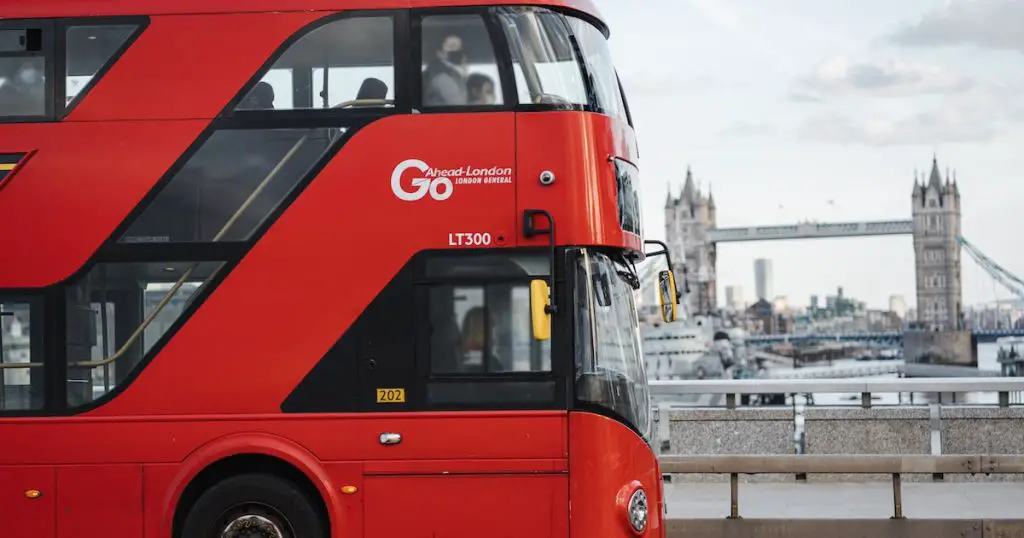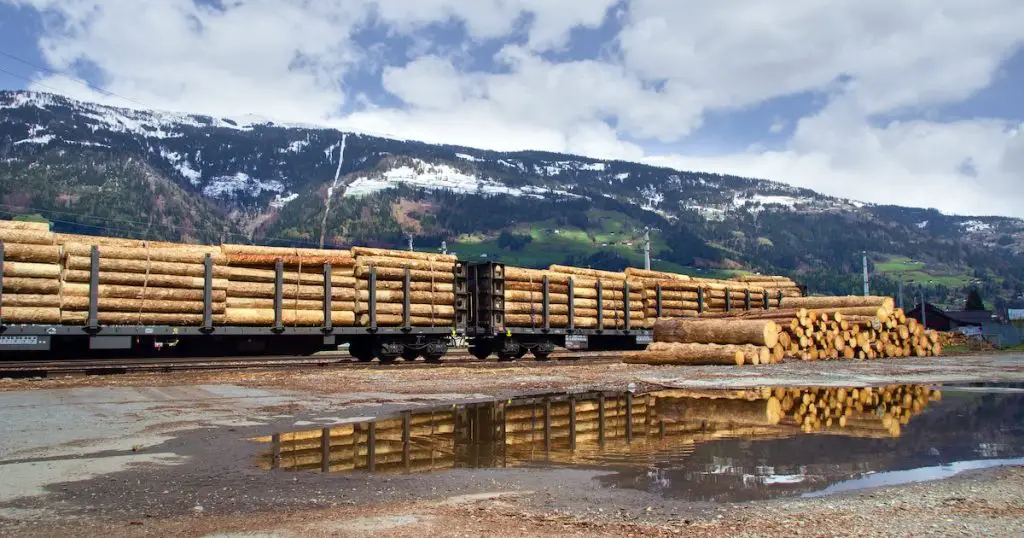Prescott, with its charming, historical essence, is a city where the transportation infrastructure is the backbone, playing a pivotal role in shaping its economic landscape. The role of Prescott’s transportation infrastructure in its economy is paramount, serving as the catalyst for growth and development.

The intricate weave of roads, public transit, rail networks, and airports not only facilitates movement but is also central to employment, business development, and tourism.
Historical Context
Prescott’s evolution in transportation depicts a story of transformation and adaptability. The city, having transitioned from rudimentary paths to complex transit networks, reflects the evolution of societal needs and technological advancements. This transformation has been synonymous with the development of the local economy, altering the way businesses operate and communities interact.
Prescott’s journey began with simpler, pre-industrial age transportation methods, adapting to the needs of the time. The horse-driven carriages and simplistic pathways were the lifelines of the city, carving the way for trade and interaction.
Over time, the emergence of modern infrastructure brought new dimensions to the transportation scene in Prescott. The foundations laid during this era were instrumental in shaping the city’s current transportation structure, enhancing connectivity, and expanding economic horizons.
Core Components of Prescott’s Transportation Infrastructure
The core components of Prescott’s transportation infrastructure—roadways, public transit systems, rail networks, and airports—are integral in maintaining the city’s economic and social equilibrium.
Each component plays a distinctive role, with roads and highways acting as the arteries of local commerce, public transit fostering accessibility and inclusivity, rail networks enhancing connectivity and trade, and airports opening avenues for tourism and international interaction.
Together, these components form the structural foundation upon which the city’s economic vitality and communal harmony rest, driving Prescott toward sustained growth and development.
Roadways and Highways
Major roads in Prescott are more than just asphalt and concrete; they are the veins carrying the lifeblood of the local economy. The impact of these roads is evident in the bustling local businesses and the thriving industries lining them. They act as the facilitators of commerce, enabling goods, services, and people to move seamlessly.
Studies show How Roads Impact Economy that well-laid roads and highways can significantly influence local economies by reducing transportation costs and time, thus enhancing efficiency and productivity. In Prescott, this impact is seen in the flourishing local enterprises and the attraction of new businesses to the area.
Public Transit Systems
Public transportation in Prescott is a crucial aspect of the daily lives of its residents, contributing significantly to the economic activity of the city. It provides accessible and affordable means of commuting, promoting social inclusion and environmental sustainability.
A report by the American Public Transportation Association explains the multifaceted economic implications of robust public transit systems. They are not just mobility providers; they are enablers of economic development and job creation, fostering community growth and cohesion. In Prescott, this translates to enhanced local commerce and improved quality of life for its residents.

Rail Networks
The role of rail networks in Prescott’s history is etched in its economic and cultural fabric. From the early days of steam engines to the modern, sophisticated rail systems, trains have been significant economic drivers.
The current state of rail networks in Prescott continues to sustain various sectors of the local economy. They serve as efficient connectors for goods and people, supporting trade and fostering economic activities. The Economic Times reports that well-maintained rail networks can substantially contribute to regional economic development by enhancing accessibility and connectivity.
Airports and Aviation
Air transport in Prescott opens the skies for economic development, facilitating fast and efficient movement of people and goods. The local airports are not just transit points but also significant contributors to the local economy, supporting tourism, and fostering business growth.
Airports, with their intricate operations and services, significantly impact tourism and local economies. They attract businesses, create jobs, and provide an influx of visitors, enriching the cultural and economic tapestry of the region. In Prescott, the aviation sector supports the vibrancy of the local tourism industry, bringing in visitors and contributing to the city’s economic diversity.
Economic Implications
The economic implications of Prescott’s transportation infrastructure extend far beyond mere connectivity, acting as the linchpin in the city’s economic fabric. It intertwines with various aspects of economic life, fostering employment, catalyzing business activities, and enhancing tourism.
The repercussions of each infrastructural component radiate through the local economy, creating a cascade of benefits and opportunities. The synergy between transportation and economic activity in Prescott signifies a dynamic interplay, where the enhancement of one reflects in the flourishing of the other, establishing a cycle of growth and development.
Employment Opportunities
Transportation infrastructure is a pivotal job creator in Prescott, offering a myriad of employment opportunities, both directly and indirectly. The sector acts as a significant employer, fueling economic activity and prosperity in the region.
Indirectly, the influence of transportation infrastructure permeates various sectors of the local economy, fostering job creation and stimulating economic growth. It supports ancillary industries and services, catalyzing a ripple effect of economic activities across the region.
Business Development
Prescott’s transportation infrastructure serves as a magnet for business development, drawing in new enterprises and providing fertile grounds for existing ones to expand. It creates an environment conducive to business growth, fostering innovation and competitiveness.
The connectivity and accessibility afforded by well-developed transportation networks make Prescott an attractive destination for businesses. It lowers logistic costs, enhances efficiency, and opens up new markets, contributing to the economic vitality of the city.
Tourism Enhancement
Accessibility is synonymous with tourism growth, and in Prescott, the transportation infrastructure acts as the gateway for tourists. The influx of visitors brings economic benefits, enriching the local economy.
- Economic Contributions of Tourism:
- Revenue Generation
- Job Creation
- Cultural Exchange
Future Projections
Future projections for Prescott’s transportation infrastructure are gleaming with promises of innovation and expansive growth, poised to bring forth transformative impacts on the city’s economic landscape.
The anticipation surrounding upcoming projects is not just about enhanced connectivity, but also about fostering economic revitalization and sustainable development.
These projections are imbued with hopes of resolving existing challenges and optimizing opportunities, aiming to sculpt a future where transportation infrastructure is a harmonious blend of efficiency, sustainability, and inclusivity, driving the city towards new horizons of prosperity and communal harmony.

Planned Infrastructure Developments
Prescott has several projects on the horizon, with each promising to bring about a significant impact on the local economy. Stakeholders from various sectors are engaged in these developments, ensuring diverse perspectives and inclusive growth.
Anticipation surrounds these upcoming projects, with discussions focusing on their potential to stimulate growth and resolve existing challenges. The careful planning and execution of these projects are crucial to maximizing their benefits and minimizing any adverse impacts.
Anticipated Economic Outcomes
The future of Prescott’s transportation infrastructure holds promises of economic revitalization and sustainable growth. However, it also poses potential challenges that require thoughtful solutions and proactive management.
As the city embarks on new projects, the anticipation is that these developments will serve as catalysts for economic growth and diversification. The realization of these benefits will depend on the successful integration of these projects into the existing fabric of the city, addressing the needs and aspirations of its residents.
Case Studies
Examining case studies in Prescott reveals the tangible and multifaceted impact of transportation infrastructure on the local economy and community life. These studies, encompassing both successful and unsuccessful projects, serve as a repository of insights, experiences, and lessons, illuminating the pathways and pitfalls of infrastructural development.
They offer a nuanced understanding of how transportation initiatives can be harnessed to fuel economic growth, enhance community well-being, and foster sustainable development. In essence, the case studies provide a compass, guiding future endeavors towards balanced and impactful outcomes, contributing to the continuous evolution and enrichment of Prescott.
Successful Transportation Projects
Examining successful projects in Prescott reveals the tangible economic benefits and the transformative impact of transportation infrastructure on the local economy. These cases offer valuable lessons in efficiency, sustainability, and community engagement, guiding future endeavours.
Learning from these successful initiatives is crucial. It provides a roadmap for implementing projects that are economically viable, environmentally sustainable, and socially inclusive, fostering balanced and equitable growth.
Lessons from Unsuccessful Initiatives
An in-depth look at failed projects offers insights into the pitfalls and challenges in developing transportation infrastructure. These lessons are crucial for avoiding past mistakes and ensuring the success of future projects.
Understanding the reasons behind the failure of certain projects provides a framework for developing robust and resilient transportation infrastructure. It highlights the importance of comprehensive planning, stakeholder engagement, and continuous evaluation to achieve successful outcomes.
Policy and Regulation
In Prescott, policy and regulation serve as the architectural blueprints for transportation infrastructure, meticulously delineating the structure, function, and development of transit systems. Local governance, anchored by community values and economic objectives, crafts these policies to ensure infrastructural projects resonate with the needs and aspirations of the populace.
This regulatory scaffold not only influences the trajectory of transportation development but also intertwines with the economic fabric, shaping the economic outcomes and communal benefits derived from transportation infrastructure.
The collaborative essence of policy-making in Prescott ensures a harmonious and sustainable infrastructural ecosystem, balancing innovation with tradition and progress with preservation.
Local Governance and Policy Framework
Policies in Prescott play a critical role in sculpting the transportation infrastructure, setting the ground rules, and defining the scope of developments. The local governance structure ensures that these policies align with the city’s vision, catering to the needs of the community while fostering economic growth.
According to the National League of Cities, local governments wield significant influence over transportation infrastructure through policy-making, shaping the development and functionality of projects to align with community needs and aspirations.
In Prescott, this manifests as a meticulous approach to ensuring that infrastructure developments are symbiotic with economic and community goals.
Advocacy and Public Participation
The voice of the public is a powerful force in shaping transportation projects in Prescott. Community opinions and preferences weigh heavily in the decision-making processes, ensuring that projects align with the needs and aspirations of the residents.

Public participation in Prescott goes beyond voicing opinions; it involves active engagement in the policy-making process, contributing to the development of projects that are reflective of the community’s values and needs. The symbiotic relationship between the community and the local government in Prescott ensures that transportation infrastructure developments are holistic, inclusive, and sustainable.
Frequently Asked Questions: Role of Prescott’s Transportation Infrastructure in its Economy
How has Prescott’s transportation infrastructure evolved over the years?
Prescott’s transportation infrastructure has undergone significant transformations, evolving from simple, pre-industrial methods to a multifaceted modern network, enhancing connectivity and fostering economic development.
What is the significance of each component of the transportation infrastructure to the local economy?
Each component, be it roads, public transit, rail networks, or airports, plays a unique role in economic stimulation, impacting employment, business development, and tourism in its own distinct way.
What role does public participation play in the development of transportation infrastructure?
Public participation is pivotal, influencing the design and implementation of projects to ensure they align with community needs, values, and aspirations.
How do local policies and regulations impact the development of transportation infrastructure and subsequently, the economy?
Local policies and regulations are the guiding forces, shaping infrastructure developments to be in sync with economic and community goals, and influencing the extent and nature of the economic impact.
What are the potential future developments in Prescott’s transportation infrastructure, and what economic impacts can be anticipated from them?
Future developments hold promises of economic revitalization and growth, with anticipated benefits in job creation, business development, and enhanced quality of life, dependent on successful integration and execution.
Conclusion
The transportation infrastructure in Prescott is a pivotal entity, significantly influencing the economic dynamics of the city. It’s not merely a facilitator of movement but a critical economic driver, synergizing various components like roads, public transit, rails, and air transport to foster holistic growth and development.
With new developments on the horizon, the infrastructure promises transformative economic impacts, reinforcing Prescott’s journey of continuous evolution and adaptability, ultimately sculpting the city’s economic and communal landscape.



Leave a Comment
You must be logged in to post a comment.